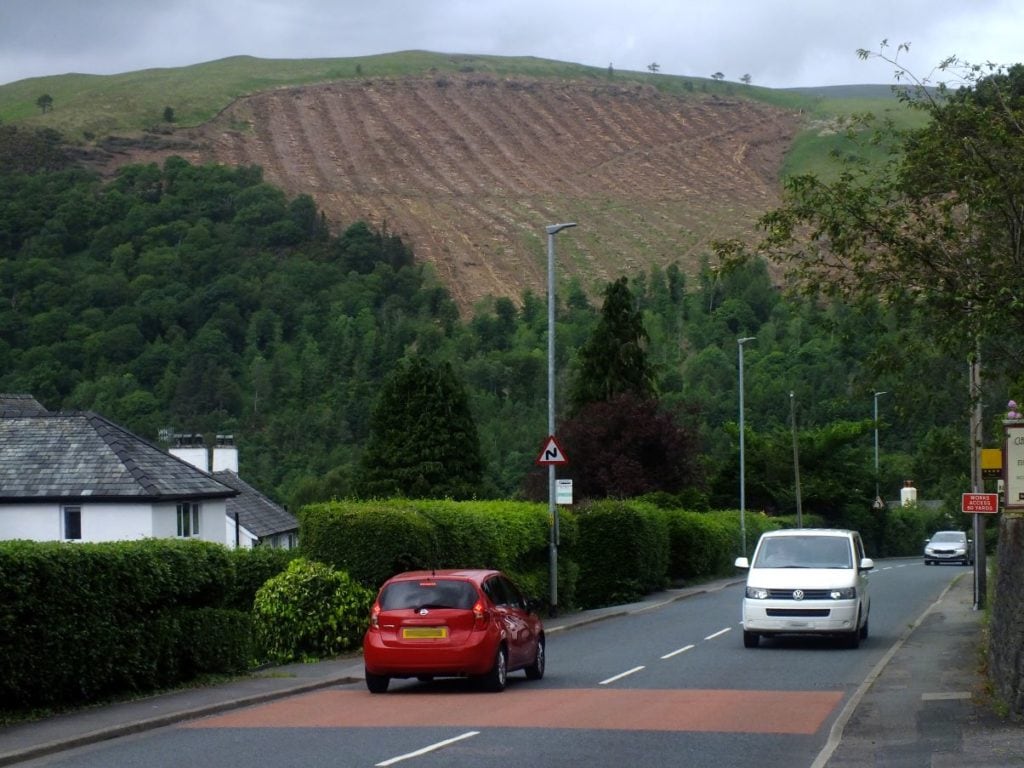
A major tree felling operation has been completed on the lower slopes of Latrigg and work is set to begin on restoring the site over the summer.
Axed timber from Mirehouse has been hauled away and forwarded to a number of mills and biomass plants in the north and southern Scotland.
David Atkinson, forest manager for chartered surveyors Edwin Thompson, said that the timber felled was predominantly mature Sitka spruce which is normally ready for harvesting from around 35 years of age.
He added that there was also a small amount of Larch within the crop which was also removed at the same time as it suffers from a fungal disease, now widespread across Cumbria.
“Once all the timber is removed we will embark on restoring the site this summer,” said Mr Atkinson.
“All paths and tracks will be fully restored and upgraded and the site will be mounded and cleared ready for planting in the winter.
“The site will be planted with mainly Sitka spruce and some Douglas fir to produce a successor timber crop, however, we are including native shrubs and trees on the upper margin and along the small stream. All of this is in line with the Forestry Commission approved woodland management plan and felling licences.”
Mr Atkinson added that none of the woodland felled is considered priority habitat and there was no evidence of it being used by priority species, such a red squirrels and birds with higher levels of protection.
“It should be noted that the felling was only about five per cent of the Mirehouse Estate woodlands, such that the majority of the woods were completely undisturbed this year and indeed, as is the case most years,” said Mr Atkinson.
“About one third of the woodland owned by the estate are predominantly native oak and ash woods and these are managed for long term timber production and in less accessible areas the woods are managed entirely for nature conservation.
“This requires low levels of inputs such as removing none native shrubs such as rhododendron.”
Mr Atkinson said the estate also planted a new area of native woodland – about 15 acres – above Brundholme two years ago with support from United Utilities and Cumbria Woodlands as part of the pipeline mitigation that runs through estate land.
“It should be noted that the UK is only about 20 per cent self sufficient in timber products and we are the second largest net timber importer in the world,” said Mr Atkinson.
“This should be of major concern to all who care about global biodiversity as our needs for timber will directly and indirectly contribute to global forest loss, illegal logging and habitat loss.
“Well managed timber crops, like this one at Mirehouse and more widely in the UK, together with more productive new woodland planting can help do our bit to reduce our dependence on timber imports and the consequences that brings.”








